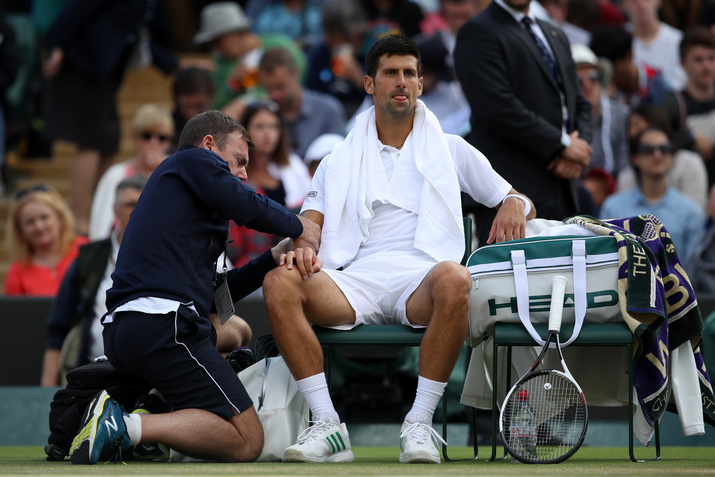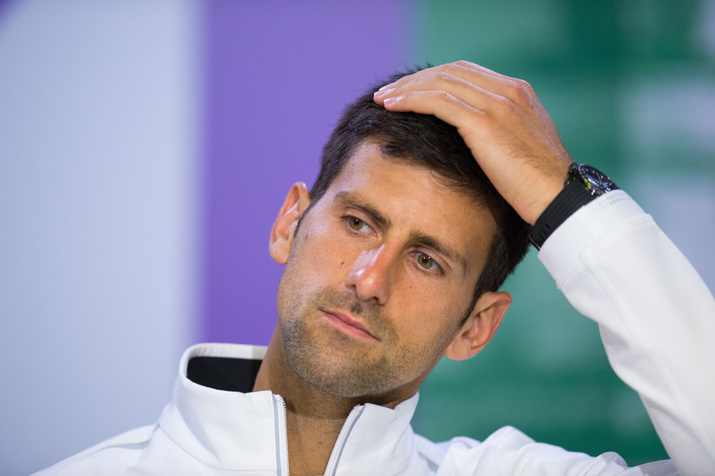Don't miss any stories → Follow Tennis View
FollowDjokovic's Demise Underscores The Strength Of Men’s Tennis
After Roland Garros in 2016, Novak Djokovic was on top of the world. He had just lifted the French Open title for the first time to complete a career grand slam and become a tennis immortal.
The Serb’s grip on the sport was unbelievably tight. The triumph in Paris meant he was the first player to be holding all four grand slams at the same time since Rod Laver in 1969. Djokovic’s game was so supreme, refined, and focused that nobody could lay a hand on his dominance. Hence, many experts were even hedging their bets on a calendar grand slam and an overhaul of Roger Federer’s record of then 17 Slams.
A year on, however, and the story is so different. Since then, personal problems, coach break ups, lack of motivation, and now a season-ending injury have all culminated into a dramatic decline for the Belgrade native.

And it all came to a head in the crushing defeat to Dominic Thiem at the quarter-finals of the French Open last month, where it was confirmed he would drop out of the world’s top two for this first time since 2011. Now, the 12-time major champion has announced he will be out for the remainder of 2017 with an elbow injury.
The season-ending injury caps a 12-month period of steady decline for Djokovic. The first signs of a fall from grace, came last year in the shock loss to Sam Querrey at Wimbledon. At the time, most experts believed it was just a blip and that the 30-year-old was fatigued. That interpretation seemed to be proved right at the US Open, two months later, when he reached the final. However, his eventual defeat there to Stan Wawrinka was telling as he went on to surrender his world number one spot to Andy Murray after losing the ATP Finals in November.
The start of this season continued in the same light, as he was knocked out of the Australian Open in the second round to world number 117 Denis Istomin. Then he failed to defend his Indian Wells, Miami, and Madrid titles, before this year’s massive French Open disappointment. In the following weeks, an encouraging win in Eastbourne was then dampened by an injury withdrawal during the Wimbledon quarter-final clash with Tomas Berdych, where his body language and facial expressions told a sorry story of disappointment, frustration, and apathy.
Clearly, Djokovic drew some breath after his iconic win in Paris last year and his focus weakened. Although it wasn’t ideal, it was a normal human reaction. Champions struggling to rejig the mind and go again, after a period of sustained success, is not alien.

Hence, perhaps it’s now plausible to suggest that the margins of error in tennis have become tighter in the last couple of years. So much so that taking your foot off the pedal means you fall too far behind. Drop your concentration, lose your edge, or sustain an injury, and you will quickly find yourself looking at a lengthy road back to your ultimate form.
Certainly, we are living in the greatest generation of men’s tennis, and even those below the ‘Big Four’ are maximizing their abilities to the fullest just to keep up, which has created a highly competitive game.
For example, who could have imagined that Wawrinka would win multiple slams over the last few years, Federer and Rafael Nadal would battle at the peak of their powers again, Alexander Zverev would emerge to win his first Masters 1000 title in Rome, or Thiem would gain the kind of consistency which makes him a bona fide threat to the elite.
What this recent history tells us, is that the game has gained real strength in depth. And hence, unlike in other sports, like soccer, where teams can often win while performing not at their best, in tennis, this has now become virtually impossible.
As we’ve seen with Nadal and Federer this year, there is always a way back to the top. However, how quickly Djokovic has fallen over the past 12 months, has epitomized how ruthless men’s tennis has become.










